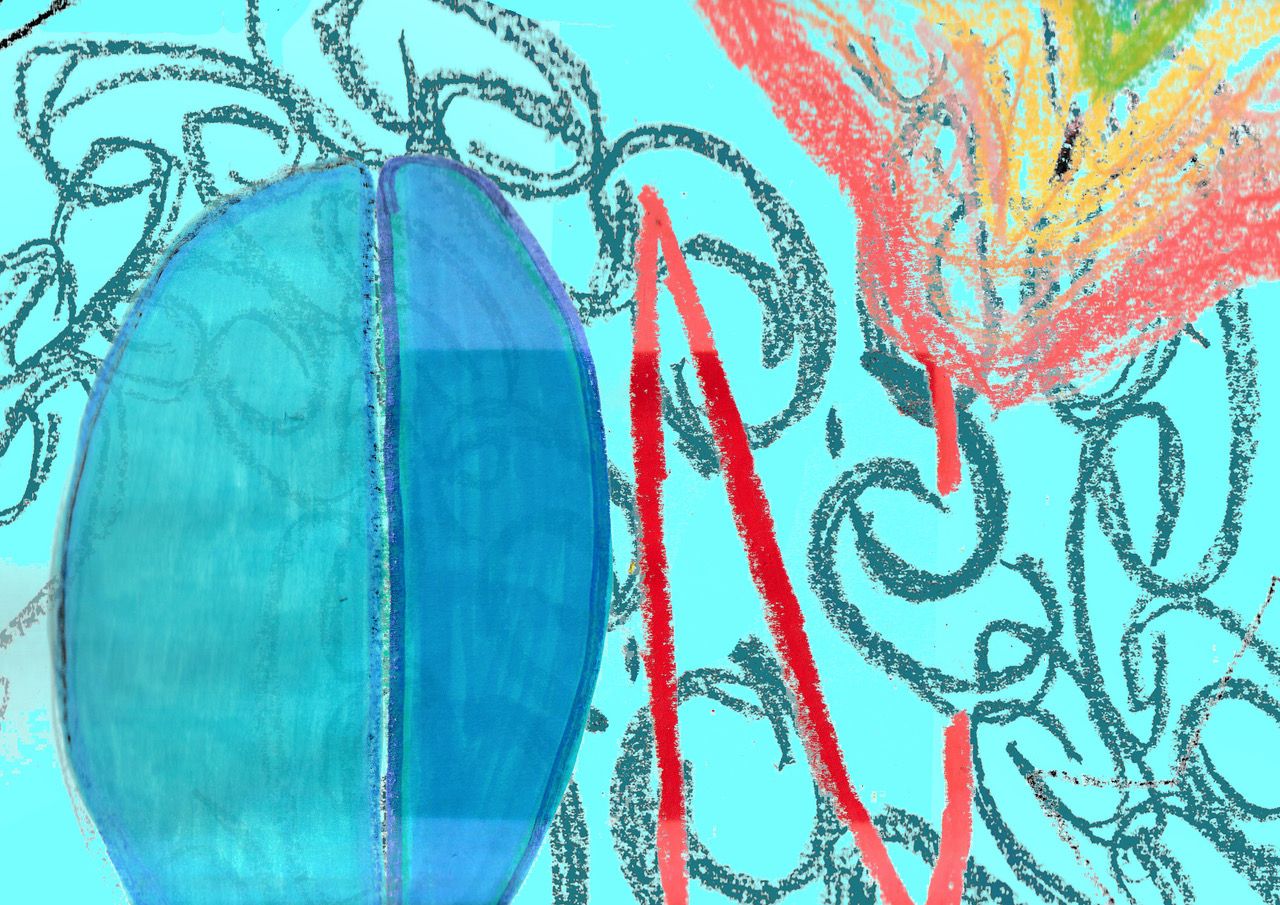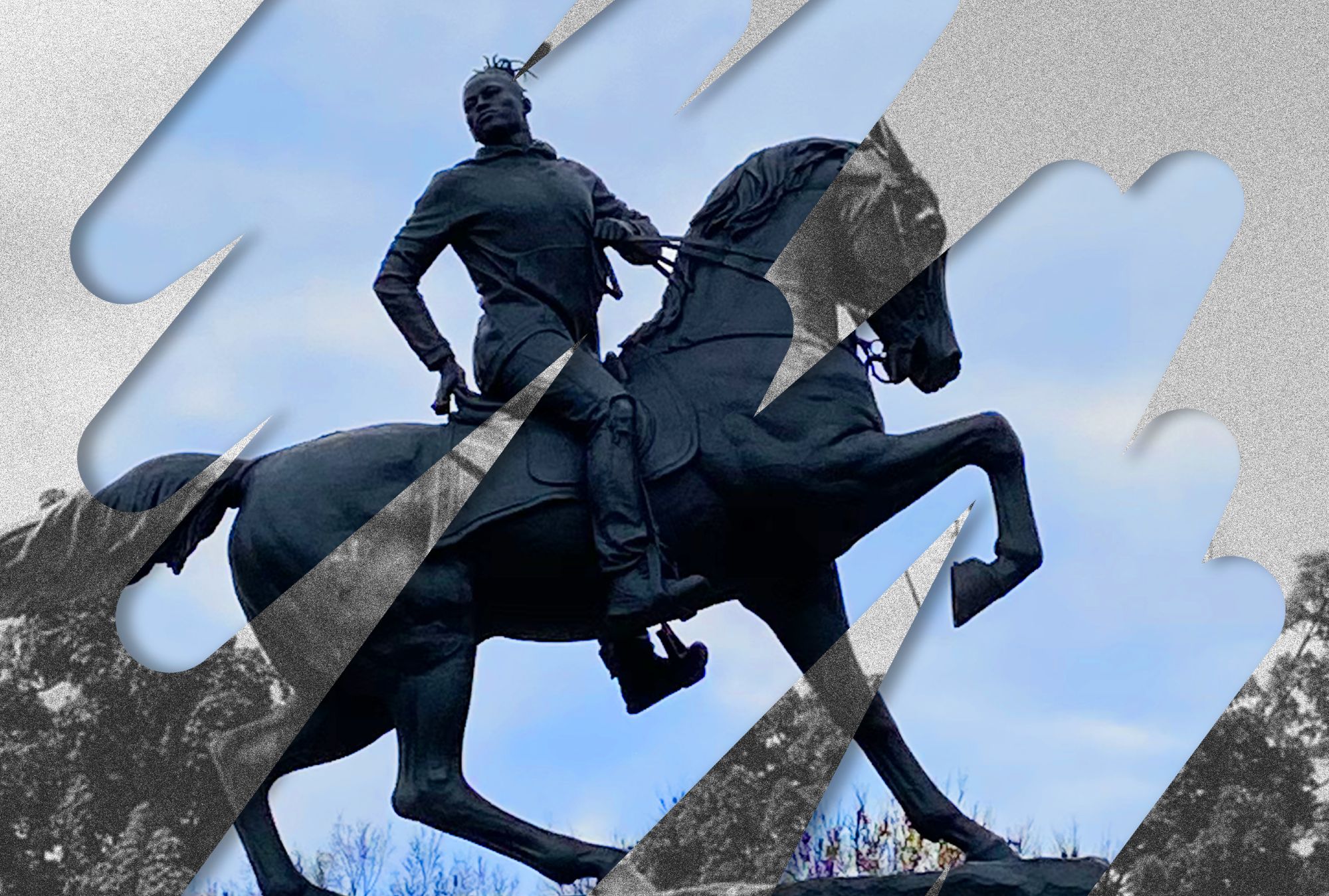
2020 was a year of constant tumult in all areas of life. A public health crisis; widespread protest against law enforcement and racial injustice; and in the U.S., the clash of a divided country awaiting a historic election. Despite the incredible difficulty in facing such demands, there have been some signs of progress. One example was the removal of over 100 racist monuments in public spaces across the country. Visible action at this scale, though largely symbolic in nature, still represents a great leap in general public stance, highlighting the lack of action in prior decades. Whether that translates to changes in policy—that is another matter, but it is a start toward the ongoing fight for equality.
In my hometown of Richmond, Virginia, the historic capital of the Confederacy, all but one of the Confederate Statues on Monument Avenue have been taken down. In its wake, there are the emblazoned plinths of a troubling past. Stripped of their bronze badges, the bare plinths have left a symbolic chasm where the statues once were. Similarly, the remaining statue of Robert E. Lee offers space for contemplation and consideration of the alternative: the contextual preservation of the statue.
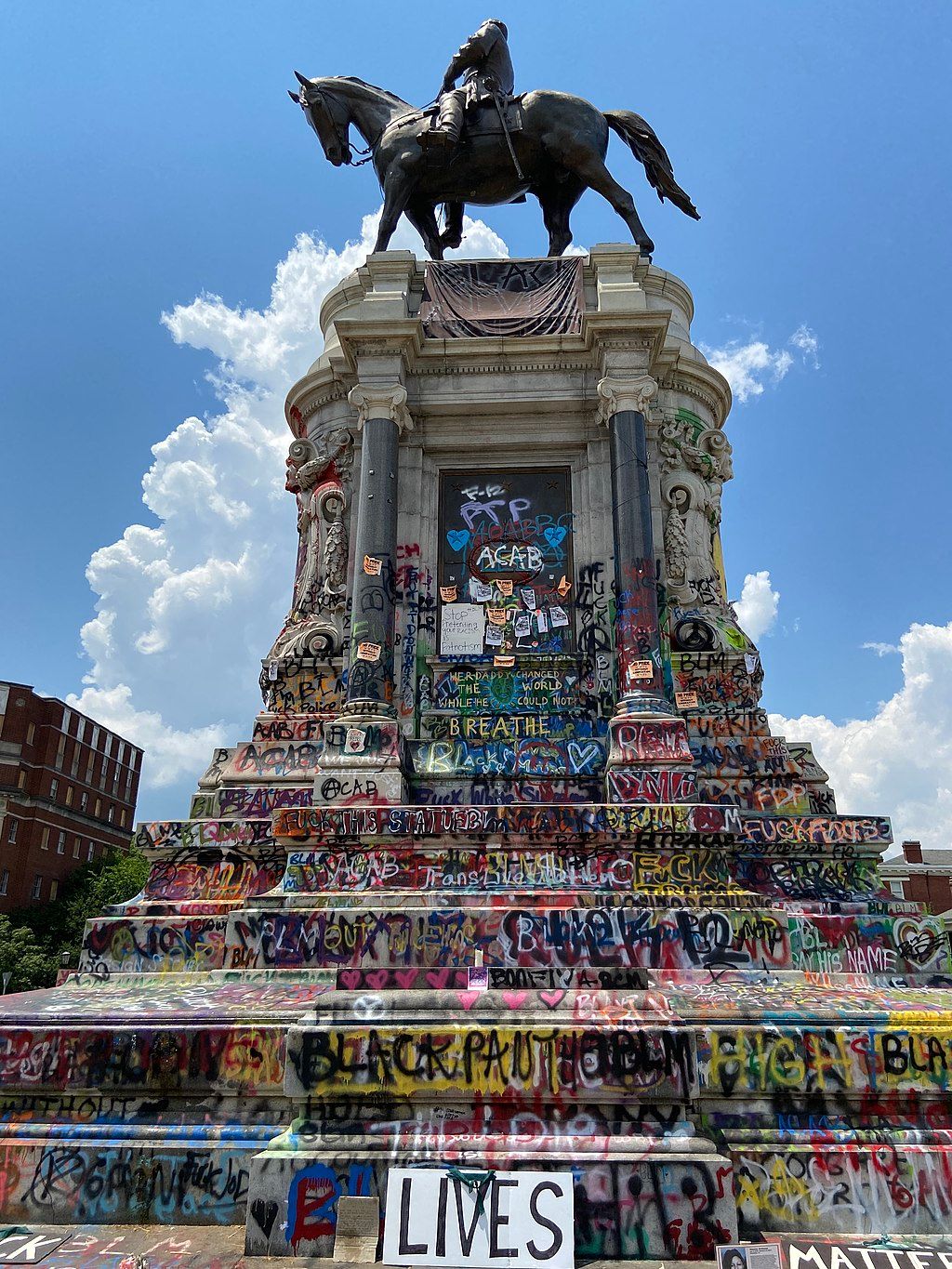
A diverse city with a complicated history, Richmond is split like much of the country between a loyalty to a troubling past, and progressive rebuilding towards the future. The contrasting outcomes—between the empty plinths and the remaining monument—offer a chance to reflect on two opposing measures that could be taken when confronting problematic memorials and the histories around them: preservation, or removal.
The Post-occupancy Robert E. Lee Circle
Arguably the most grandiose of the statues on Monument Avenue, the Robert E. Lee memorial, was erected in 1890, 15 years after the end of the Civil War in the United States. Coming from a long line of slave-owning political and military figures in America, Lee also earned fame through his long military career, most notably during the Mexican-American War and American Civil War, when he was a Commander of the Confederate Army and leader of the Army of Northern Virginia from 1862 until their surrender in 1865. Highly revered amongst rebel sympathizers, his statue was the first of seven built on Monument Avenue to memorialize the generals of the Confederacy. It also served as the springboard for what—according to historians like Carter and Murdock—came to be known as the “lost cause” narrative around the war, which portrays the rebel army as noble victims of the Northern tyrants. This sentiment can still be seen through the hundreds of remaining Confederate monuments and memorials across Virginia and the country today. While that number has slowly diminished over the decades, the famed Monument Avenue statues have resisted the various efforts of activists and politicians to remove or revise them for over 130 years.
In 1996, a sculpture of tennis star and Richmond native, Arthur Ashe, was added to the Avenue. This was a small victory in the name of Black representation and memory in Richmond. Then in 1999, a councilman named Saad El-Amin made it his civic duty to advocate for the removal of the Confederate statues, as well as to fight to stop a mural banner with Robert E. Lee’s portrait from being commissioned on Richmond’s Flood Wall. The efforts proved futile, and the mural was put in place by a committee of local community leaders. The following year, the banner was burned off the wall by an unidentified individual. Years later in 2015, activist Farid Alan Schintzius proposed adding placards to the statues that would provide context and historical revision to the monuments. The initiative, titled Truthful History Heals, was supported by Mayor Dwight Jones at the time, particularly in response to a mass shooting at a church in Charleston, South Carolina earlier that year, yet was never put into effect. To make matters worse, in 2017, the Sons of the Confederate Veterans held a parade commemorating the 100-year anniversary of the Robert E. Lee statue, filling the streets with Confederate symbols and sympathizers.
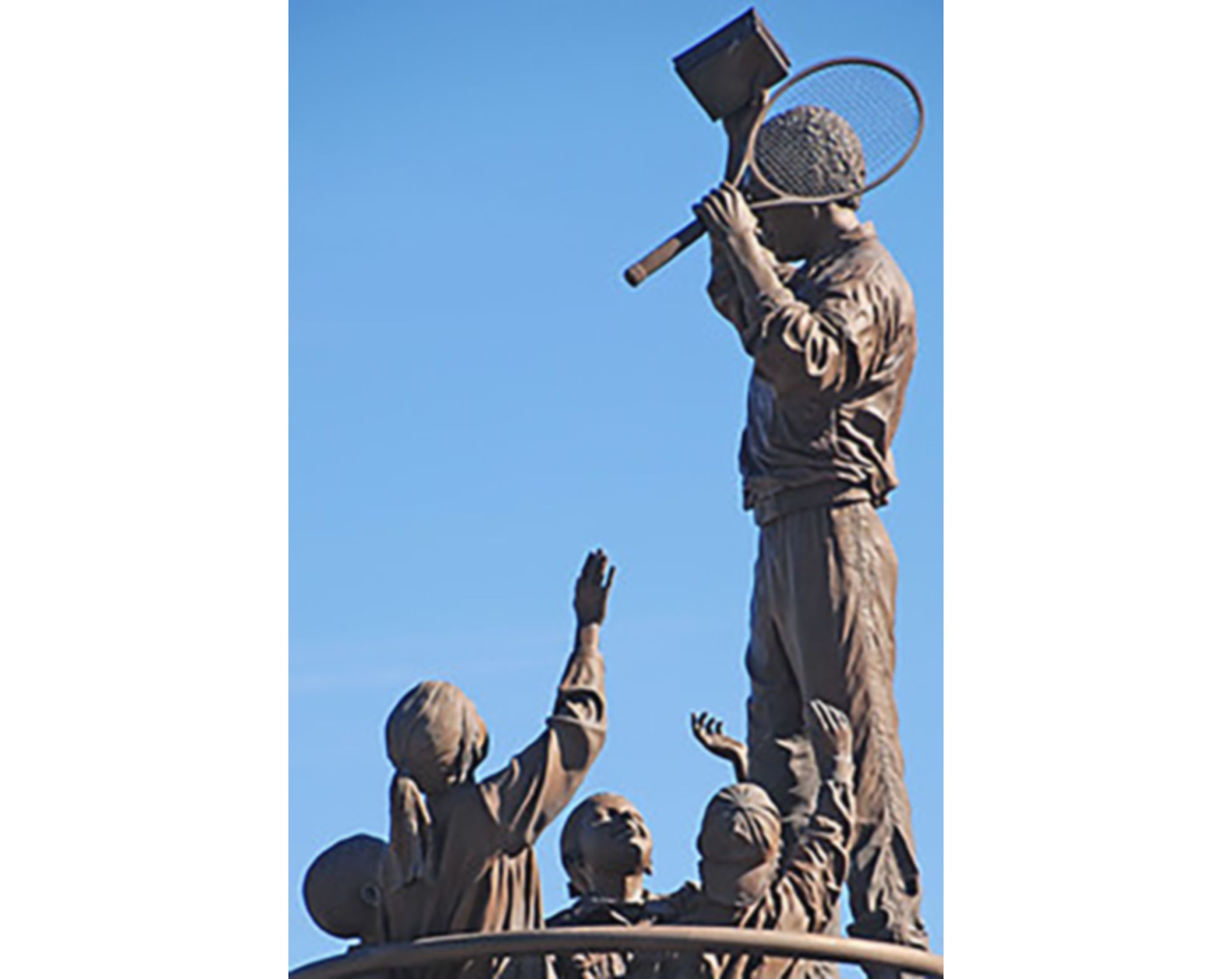
Fast forward to 2020, a very different sight can be seen compared to years past, as months of protests unfolded following the murder of George Floyd by Minneapolis police officer Derek Chauvin. Gatherings began taking place at Robert E. Lee circle, which served as a key meeting point for the local Black Lives Matter movement. Over the course of the summer, activists marched up and down the avenue marking the statues with messages, denouncing the racist idols and the police they seek to defund. Slowly, all but one of the Confederate statues on Monument Avenue were removed by Governor Northam’s state order, leaving the remaining Robert E. Lee statue in limbo as the city worked through litigation with the Lee estate, which has ties to Virginia land ownership dating as far back as the Jamestown colony, the first permanent English settlement in the Americas.
Established as the de facto meeting point for the local BLM movement, locals took up occupancy at Robert E. Lee Circle, which is now unofficially dubbed “Marcus David Peters Circle” in remembrance of an unarmed Black man who was shot and killed by Richmond police during a mental health crisis in 2018. Over the six-month span of time during which the occupation took place, the Circle became a place of tension between protesters demanding justice, the rallying of white supremacists, and forceful retaliation from law enforcement. Despite the occasional hostility, it was also a place of unity and hope. What was once a symbol of racist ideologies and separatism had turned into a place of healing. It was no longer seen as merely an obstructive roundabout, or an egregious lack of concern for the Black community, but had been transformed into a place where citizens could mourn and reflect on the deaths of dozens of BIPOC U.S. citizens who had fallen victim to the violence of police brutality. A row of signs displayed on 8" x 11" laminated papers along the base of the plinth served as a stark educational reminder of the individuals who are all too quickly forgotten and dismissed in the fickle torrential waves of contemporary media. The plinth itself became an ever-changing canvas layered with messages by Black Lives Matter supporters. One could see the white stone disappear over time under layers of colored paint, creating a prismatic impression of the collective unity and diversity that existed at The Circle over those months. It was an apt metaphor for the multiracial and entangled voices that define Richmond today.
Walking around the structure, a sense of utopian fraternity is felt as visitors weaved in and out of The Marcus David Peters Circle. With the smell of barbeque in the distance, an undulating flow of people approach and recede, experiencing the site from all angles. Everyone from recent graduates and their families to local elders were taking selfies, staking claim in the historic moment that was unfolding before them. On the grassy lawn, food vendors, community aid, and local organizers set up temporary camps to offer their support, while kids played basketball at a mobile hoop, steps away from the small garden which had begun to sprout a variety of plants. Demarking the newly claimed space is a sign that reads “Welcome to the Beautiful Marcus David Peters Circle” and in small type in the corner “All You Fascists Bound To Lose.” Stolen by local Confederate sympathizers in August of 2020, it was quickly replaced by a reinforced metal version that could not be sawed off by chainsaw.
On the perimeter of the circle were cement traffic barriers enclosing the lawn. It wasn’t long before protesters turned these into canvasses with messages and imagery that reflected the sentiments of the movements, adding one more layer of acknowledgement to the designated safe space. Though the art, music, and public rallies signified a veritable safe zone for protesters, it didn’t stop disapproving locals from yelling out their cars as they drove by, confronting people within the circle, or—as was the case with an armed off-duty officer—taking up a post at an abandoned building across the street.
As the sun set over the city, processions of protesters rose and fell like the tides nearly every day of the week, with vigils and public speakers gathering prior to the evening marches. In some cases these were peaceful events; at other times, they resembled war zones as the police deployed tear gas and chased protesters with pepper spray. Though the flicker of blue and red on the surrounding colonial facades was undoubtedly a source of trauma for those who sought accountability from the aggressors attacking them on those days, there were also rays of hope that served to ease the pain that lingered through these days. Projections were installed by lighting artist Dustin Klein and VCU graduate Alex Criqui, displaying images of victims such as George Floyd and Breonna Taylor, as well as historic Black figures such as John Lewis, Harriet Tubman, and Malcolm X. The projections replaced the static dearth of the standing statue, for the rotating timeline of heroes and martyrs of the ongoing Civil Rights Movement. It was a simple yet extremely powerful image that found its way onto the covers of National Geographic and Art Forum, bridging the space between the social and art spheres.
Rumors of War by Kehinde Wiley
Less than a mile away from Monument Avenue is one of the more recent additions to Richmond’s public art landscape: Kehinde Wiley’s Rumors of War, an equestrian portrait of a young Black “everyman” figure riding a horse, wearing a hoodie, jeans and Nike sneakers. Proclaimed as an Anti-Confederate Monument by Wiley, Rumors of War was unveiled at Times Square in New York City in September 2019.
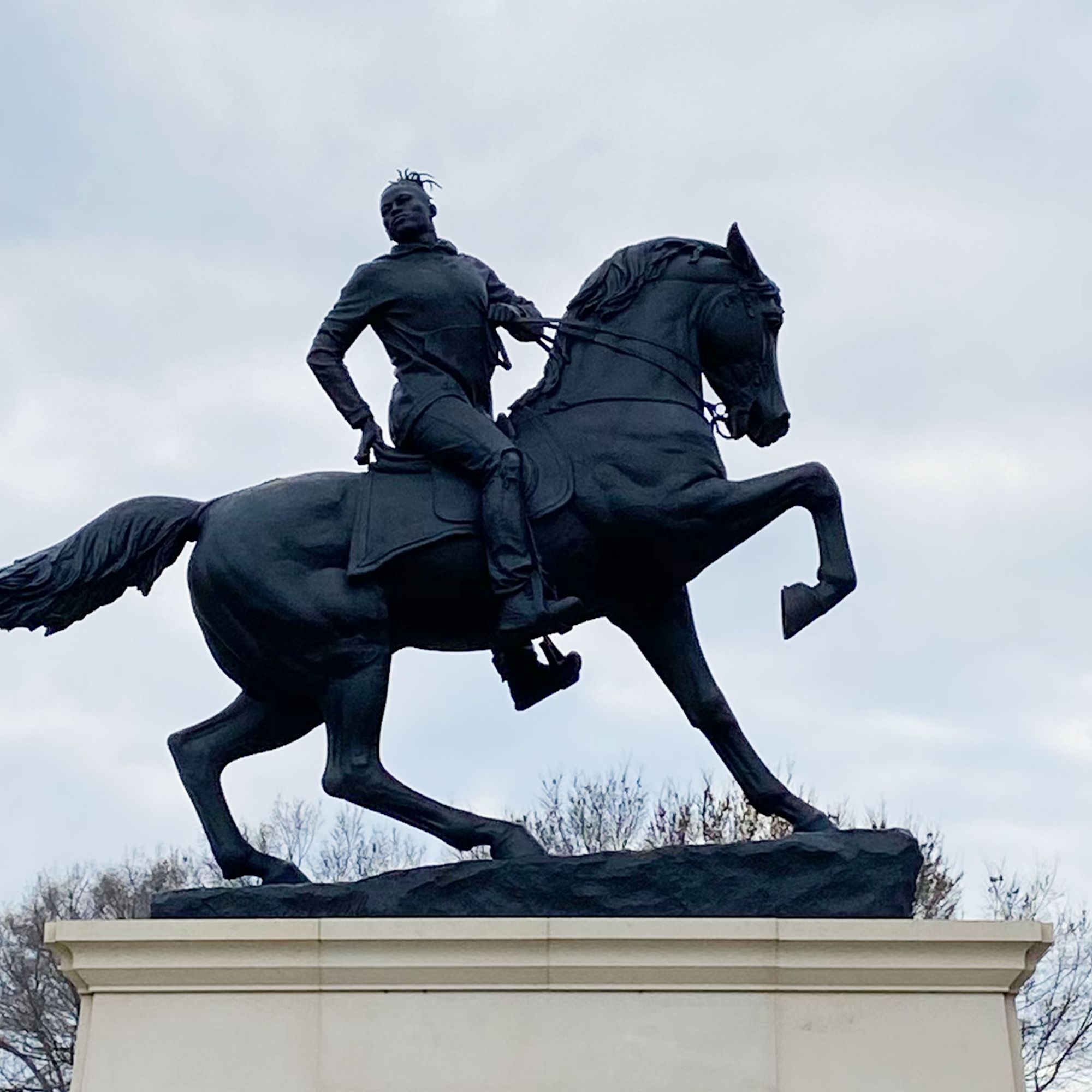
New York City was one of the more progressive and inclusive spaces during and after the Civil War, serving as a safer haven for the Black community, and thus the statue. In January 2020, the sculpture moved to the Virginia Museum of Fine Art in Richmond. This was a subtle, but powerful performative element of Wiley’s sculpture in the face of a very real and sustained opposition to racial progress in the South. The symbolic significance of breaching what is historically known to many as “enemy territory” marks the victorious occupation of Rumors of War, publicly announcing Wiley’s declaration of war on Confederate monuments only months before hundreds of Confederate statues were taken down across the country. In its completion, the ritual is a testament to the idea of leading by example, and the ability of an artist, an institution, the community, and local government to collectively acknowledge and move beyond the troubling past of the region.
Walking from the parking lot located at the back end of the Virginia Museum of Fine Art, towards the front lawn where Kehinde Wiley’s sculpture sits, I passed an ornate wrought metal sign that read “Daughters of the Confederacy, Private Property.” Responsible for the initial construction of Confederate monuments on Monument Avenue and across the U.S, the United Daughters of the Confederacy was established in 1894 in Nashville, Tennessee, as an American heritage association of women engaging in the commemoration of Confederate Civil War soldiers with the purpose of perpetuating the Lost Cause narrative and spreading white supremacy. Less than 100 feet from the UDC headquarters stands the proud outline of a Black figure poised with chin high and chest out, victoriously celebrating the quiet revolution that had been started by its installation in December of 2019.
“A symbol in itself, its [Kehinde Wiley’s Rumors of War] placement serves to reveal the complex politics surrounding monuments in Richmond, and brings to light the blurry distinctions between monuments and art objects, and private and public.”
In a show of playful mockery, Wiley’s sculpture relishes in the not-so-subtle gesture collaboratively made by the artist and the Virginia Museum of Fine Arts. A symbol in itself, its placement serves to reveal the complex politics surrounding monuments in Richmond, and brings to light the blurry distinctions between monuments and art objects, and private and public. While Wiley’s sculpture is elevated to monumental status, being prominently placed on the equally trafficked Arthur Ashe Boulevard, on the front lawn of the VMFA; the statue of JEB Stuart— of which Rumors of War was mimicking—will be reduced to the confines of its own private territory, to be transformed into an artifact of Richmond’s past. It is this tactful tension, along with the collection of aesthetic choices on the part of Whiley, that make Rumors of War such a successful piece of activist art, providing the perfect springboard as conversations around monuments come to the forefront in the coming months.
Approaching the artwork from the back, I came upon a towering profile sitting on top of a massive white stone base. As I peered up at the structure, there was a familiarity. Wiley’s sculpture was modeled after the monument of Confederate General JEB Stuart that was, until a few months ago, displayed blocks away on Monument Avenue. The statue of Stuart was one of five Confederate generals that resided on a five-mile strip of Monument Avenue. While many have been taken down and destroyed by protesters, the ones on Monument Avenue, due to their sheer size, were only superficially affected by vandalism. Instead, they were taken down by Governor Northam in a public declaration of the state government stance in light of the recent events, and will likely be displayed privately by The Daughters of the Confederacy.
So as I sat there, at the center of three stone benches placed in front of Kehinde Wiley’s statue, I initially wondered why more people weren’t gathered around in the same way they had been at the Marcus David Peters Circle. Is its placement on private property of the Museum enough to deter the community from organizing? I was quickly drawn in again by the figure in front of me. With a commanding silhouette cut into the backdrop of the surrounding trees and sky, it brought to mind the strategic appropriation of gestures and gazes from Western European art tradition that Wiley is known for in his paintings. At a height of 27 feet tall and 16 feet long, a 45 degree vertical angle is required to admire the sculpture in its entirety from the benches. The dark bronze figure is of a Black individual sitting, composed and in control of the horse it rides on. With the horse seemingly in the exact position as the one in the JEB Stuart statue, the rider assumes the regal posture of General Stuart, creating a near one-to-one copy of the Confederate soldier. Its intentions are clear, as it replicates and redefines the space on a plinth previously reserved for a white Confederate soldier.
“Rumors of War deterritorializes the longstanding tradition of putting problematic white men on pedestals, instead replacing it with the contemporary ‘everyman’ uniformed in a zip-up hoodie, ripped jeans and sneakers.”
As I compared Wiley’s piece with a photo of the J.E.B. Stuart statue, the similarity led me to imagine a sci-fi scenario in which events of the past are rewritten and manifest in the present through the sudden change of certain elements such as photographs (as in the film Back To The Future) or in this case, a statue. It’s what critical theorist Saidiya Hartman might describe as critical fabulation, or a methodology that merges archival research with critical theory and fictional narrative to consider histories that have been lost through bias or discrimination. In other words, the statue is reimagining possibilities through creation and paving lines of flight for potential existences. In a sort of real-life Photoshop mock-up, Rumors of War deterritorializes the longstanding tradition of putting problematic white men on pedestals, instead replacing it with the contemporary “everyman” uniformed in a zip-up hoodie, ripped jeans and sneakers. Though the rider is declared to be a man across articles, and on the sculpture’s Wikipedia page, there is a gender fluidity to the heroic figure, with its smooth hairless face, playful hairstyle—buzzed sides with braids/dreads tied up on top—and neutral clothing that gives the viewer room to identify them anywhere along the gender spectrum. A subtle, but ostensibly conscious choice, this nods to the intersectional dimension of the racial justice movement at large. The bronze figure on horseback, heavy and weighed by the past, proudly announces its arrival at the plane of imminence, ready to claim its overdue aesthetic reparations in the U.S.
Panning my view down the heavy black form to its base, I set my sights on the equally massive white stone plinth. In perfect replication of its original inspiration, the mass has the vague resemblance of a small mausoleum with its contrasting tone against the untarnished bronze figure, which made the base seem all the more white under it. It conjured yet another layer to the complex celebration held in the sculpture, as the Black soldier and their horse ceremonially stamp on the white tomb beneath. Engraved on the plinth is the title, Rumors of War, an allusion to Jesus’s speech from Matthew 24:6:
“You will hear of wars and rumors of wars, but see to it that you are not alarmed. Such things must happen, but the end is still to come. Nation will rise against nation, and kingdom against kingdom. [...] Then you will be handed over to be persecuted and put to death, and you will be hated by all nations because of me.”
Below the title is Kehinde Wiley’s name and the year it was created: 2019. I found this proclamation of authorship to be an interesting detail since they are typically omitted from monument works. This is only one of the various features that distinguishes it from a public commission.
“As we envision what will replace the empty plinths on Monument Avenue, and the rest of the nation in the coming years, committees will be faced with several valid dilemmas when treading the blurry space between private artwork, and public monuments”
While Rumors Of War serves as a prime example of how the worlds of activism and art can be interwoven with great affect, there still remains the question of its success as a monument. As we envision what will replace the empty plinths on Monument Avenue, and the rest of the nation in the coming years, committees will be faced with several valid dilemmas when treading the blurry space between private artwork, and public monuments.
Potentially the most apparent detail in Wiley’s Rumors of War, are the shoes worn by the “hero”—a pair of Nike© logo embellished trainers. In ironic contrast to the presumably handmade boots worn by JEB Stuart, our hero wears a shoe that can be tied to the reputation of child labor, worker exploitation, and consumerism, otherwise known as capitalism. Could this really have been an oversight on the part of Kehinde Wiley who, as detailed above, has done a great deal in orchestrating a multi-tiered attack on the archaic practices of yesteryear? Could it be that there is a bit of irony he intended on planting? Could this be a subtle acknowledgement of the modern shackles which continue to bind the feet of our hero?
With traces of capitalism’s bloodshed across economic categories to this day, it is impossible to divorce the ongoing effects it has on vulnerable and disenfranchised communities around the world. It brings to mind the sculpture Reaching Out by Thomas J. Price, in which the artist’s intentions were to represent the “Black everywoman” and “celebrate Black culture and reject monumentalism.” The sculpture is a fantastic likeness of a Black woman wearing a pair of basic slacks, t-shirt and, notably, Nike© trainers, as she stands looking down at her cell phone—an incredibly ubiquitous image of today’s society.

Considering the title, one would assume that she is “reaching out” to a friend in need of emotional support during a time of crisis, or posting a social justice call-to-action on her social media accounts. Yet out of context, it simply reads as yet another person who has fallen victim to the all too normal meta-mirror habits of digital consumption. While this is an undeniable improvement from the arcane grandiosity of the Confederate generals, I can’t help but feel like there is a bit of defeat in settling.
The (Monument) Revolution Continues
Let’s examine the point made by artist Thomas J. Price about “monumentalism.” It helps highlight how monument design, as a practice, could use a level of revision as well, both spatially and temporally. Take the issue of relative value critique: it’s not uncommon for a public figure’s disgraced legacy to be revisited or an artwork’s anachronism revealed through a more contemporaneous lens.
One recent example is the sculptural faux pas by artist Maggie Hambling, who chose to portray Mary Wollstonecraft, a pioneering feminist philosopher, in the nude. In an article called Why I hate The Mary Wollstonecraft Statue, Guardian journalist Rhiannon Lucy Cosslett points out the odd nature of the sculpture, stating: “Admirers like me never expected to be left contemplating whether she had a full bush.” She continues her review by making a good point for public symbols as a whole, claiming: “They don’t even need to be figurative; rather, they can be as inventive or as groundbreaking as the artist desires.”
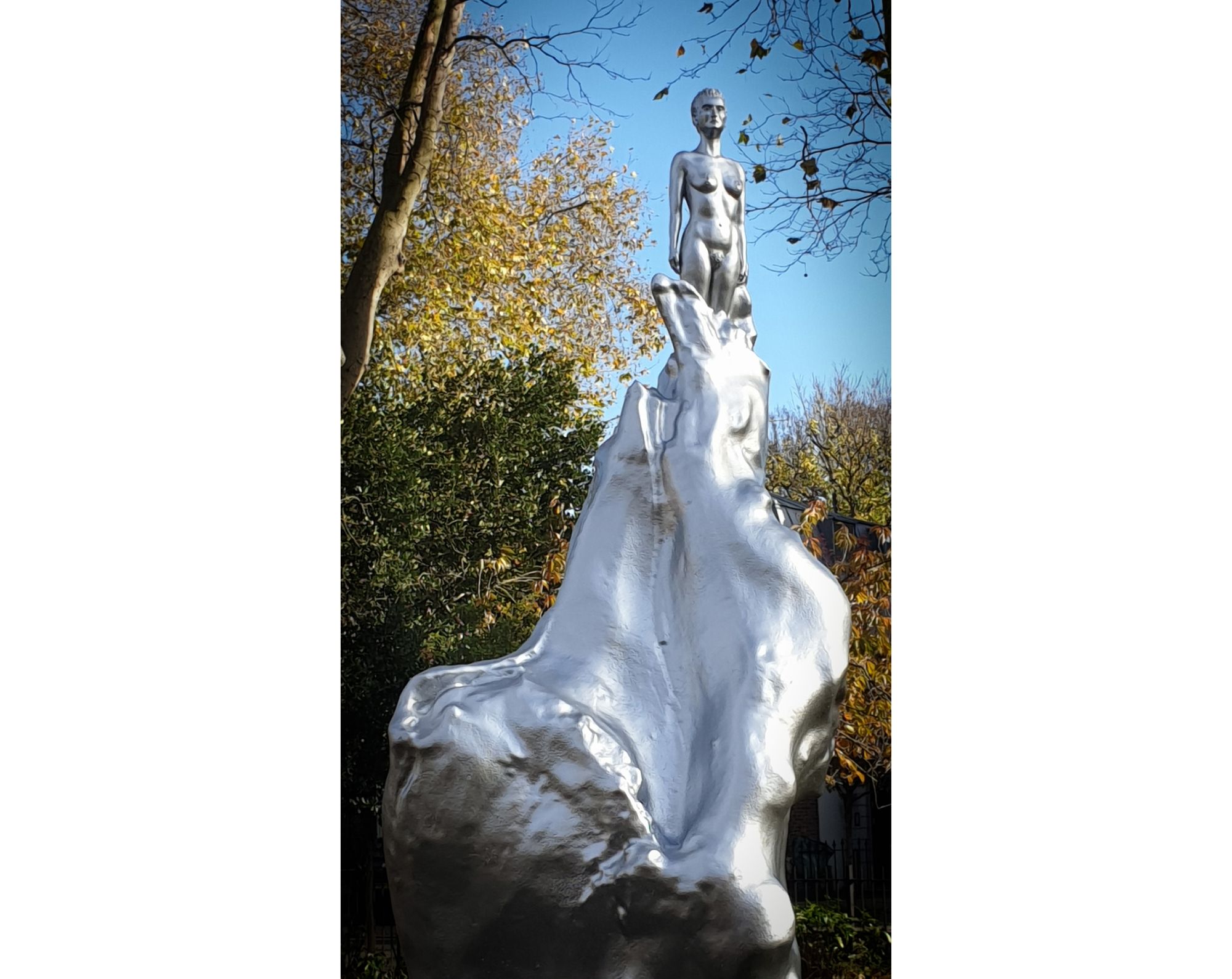
While this may give the artist an unfair amount of authority on the outcome, one could simply apply a stylized and allegorical hand to the work in an attempt to bridge a gap between past and present/future. Take Simone Yvette Leigh’s Brick House for instance. For this piece, specifically she referenced the Batammaliba architecture from Benin and Togo; the teleuk dwellings of the Mousgoum people of Cameroon and Chad; and Mammy’s Cupboard, a brick restaurant in Natchez, Mississippi made to look like the stereotypical depiction of Black women happy in their life of slavery or servitude. In this bricolage of forms, she depicts various manifestations of Black identity, both self-created and imposed, African and American, in order to acknowledge certain intersecting histories.

Furthermore, one could argue that in a global, decentralized society, it becomes more and more difficult, if not irresponsible, to grant any one idyllic figure the weight of carrying an entire movement/sentiment/community through time alone, and this would be better suited to very site-specific installations. This opens up the possibility for a non-human representation of memory and values. If you consider the wide range of monuments/memorials that exist—from a simple park bench, to a sewage treatment plant—there lies an opportunity to provide something more functional than the limited use and interpretation of a figurative sculpture.
An example that comes to mind is Doris Salcedo’s Fragmentos. In this monument, which marked the disarmament and signing of a peace agreement between the FARC and Colombian government, Salcedo created a pavilion space in Bogota, Colombia, consisting of tiles and armor built from the melted guns collected by the government. The piece provides a space for regeneration, reflection and dialogue, while also advocating for the preservation of diminishing urban communal space, which becomes increasingly important during times of community healing.
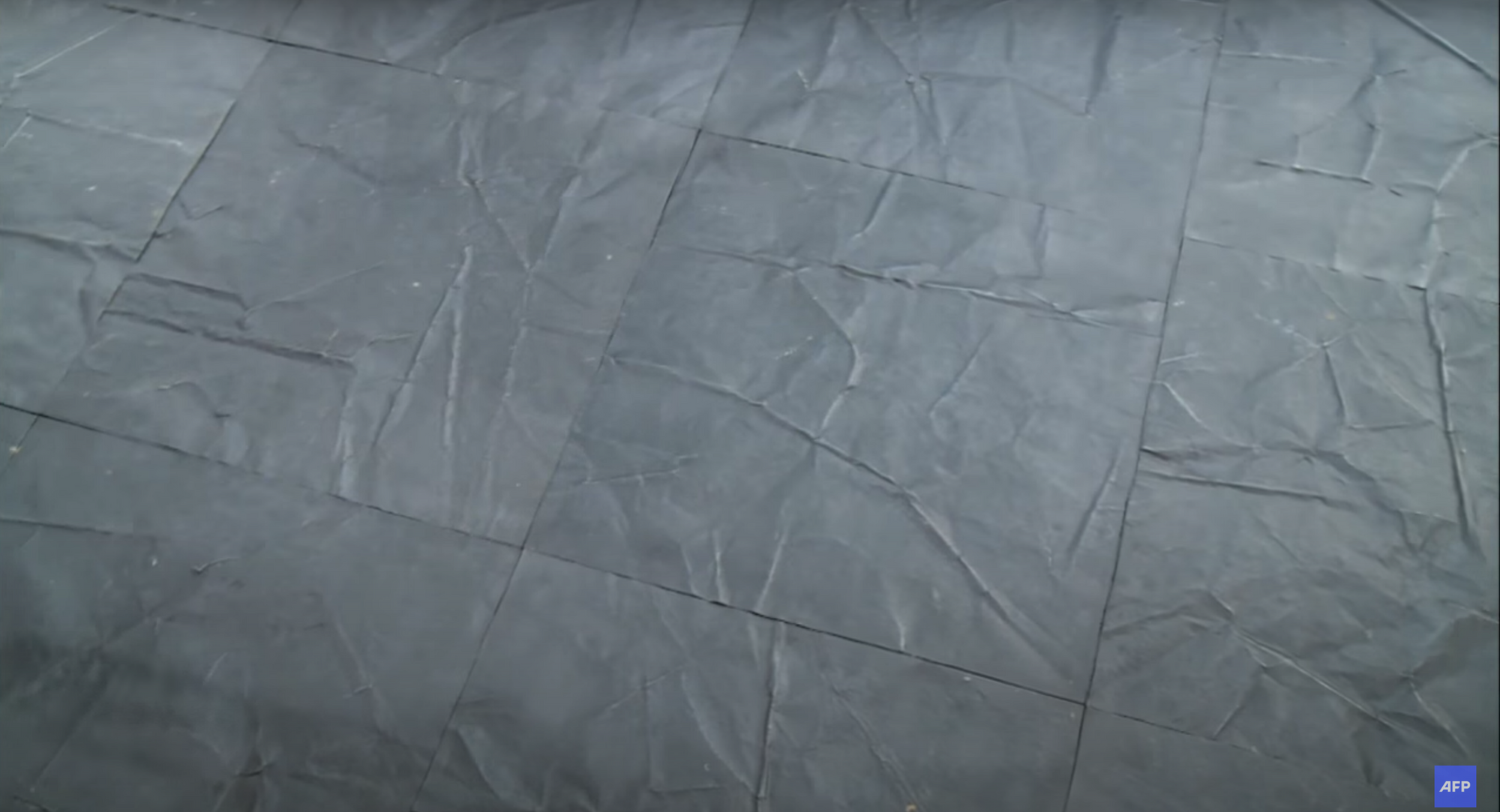
Though the examples mentioned only begin to scratch the surface in terms of the potentials of monuments and public art, it proves there are some very real things to consider and will undoubtedly bring about a manifold of implosive ethical stances and opposing aesthetic perspectives. Could a future monument come in the form of something other than an art object, like, say, a meaningful legislative change to the laws that have historically targeted and exploited the BIPOC community? Or how about clean drinking water for communities like Flint, Michigan? Whatever the approach, we have the tactics of visionaries like Kehinde Wiley, Simone Yvette Leigh, Doris Salcedo, and others to guide us into battle, and get us one step closer to declaring victory in the fight for social justice and equality.
Mauricio Vargas (he/him) is an interdisciplinary artist based out of Richmond, VA. His work focuses on public art, speculative design, and vampires. He is currently pursuing an MFA at the University of Hartford.
This text was produced as part of the Troublemakers Class of 2020 workshop.




